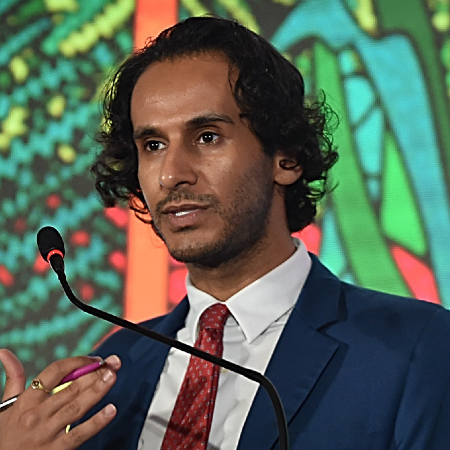Rising through the classes
For sale: Investible asset. Self-liquidating with low default and loss rate. Contributor to real economy businesses. Short term maturities available. It’s a compelling sales pitch that, for the first time, is beginning to push trade finance from niche to mainstream asset class for funds and investors.

While banks and banking groups have long been promoting the merits of trade finance, its realisation as an investible asset class on a par with mainstream loan market products was always going to depend on a range of factors – some beyond its control. Yet in more recent times, a perfect storm appears to have brewed that has seen the development of the asset gather considerable pace.
As the global trade finance gap has stretched to $1.6 trillion, according to the Asian Development Bank, compliance and regulatory requirements have simultaneously shrunk banks’ manoeuvrability. This is an impasse that the industry is partly trying to ease by further extending its hand in the direction of alternative investors.
For investors, the tightening of spreads in other loan markets combined with a lower interest rate environment has led to a general compression of yields that is encouraging them to return the gesture.
Track record turns education to action
It is a movement that has been detected by Gerry Afentakis, head of strategic development at EFA Group, which originates direct lending investment opportunities. “There has certainly been a particularly strong increase in interest in the trade finance asset class over the last 24 months. Across the non-banking trade finance industry, I don't think there has ever been more capital been raised than during this period,” says Afentakis.
While awareness continues to be an important driver – EFA and its peers have undertaken extensive education initiatives within the investment community for a number of years – the time spent building a solid track record of the kind investors prize is playing a crucial role in winning over those who are now aware.
Says Afentakis: “Our flagship fund now has more than 10 years of track record. This audited NAV shows an empirical de-correlation to movements in other asset classes or the economy as a whole. Trade finance, when properly practiced, is a true absolute return strategy.
“At the same time a portfolio of sufficient size can be very resilient, as demonstrated by the fact that while we have of course had losses in the portfolio, EFA has never experienced a negative monthly return.”
Another key component has been the emergence of Private Debt as an asset class. For the growing number of investors looking for private debt opportunities, they “find trade finance a compelling subset of that asset class, and trade finance firms as having very robust operational infrastructure, institutional size AUMs and extensive track records.”
Such track records are key if investors are to find in trade finance a product which they are reasonably assured has “acceptable returns and relatively low risk profiles,” says George Delyannis, Partner at Park Lane Trade Group. Recently, he adds, that has held true, with “results in most cases outperforming Libor.”
“These are good market conditions for investors. In this climate, we are going to be providing funding to established companies to facilitate organic growth and support the sustainability of the enterprises,” says Delyannis.
Banks’ familiar challenges paving new paths
The now-familiar regulatory challenges banks are facing, which have led to a reduced risk appetite and diminishing correspondent banking networks, have added urgency to the drive towards firmly establishing trade finance as an asset class.
Dr. Rouben Indjikian, international consultant and lecturer in commodities, energy and trade finance at Webster University Geneva, says these limitations – “the main driving force in the increase in alternative modes of trade finance” – have led to both cost and time burdens for banks and clients. “New banking regulations are increasing the cost of capital for banks and more stringent compliance requirements are making responses from banks slower,” In the commodity finance space, where the swift movement of goods is often vital, this is “pushing trading partners towards more agile, albeit also potentially more expensive, sources of trade finance.”
Smaller companies are baring the brunt of this squeeze, as with the aforementioned trade finance gap generally. Says Dr. Indjikian: “They are squeezed by more difficult access to bank credit and thus have turned to various specialised trade finance funds. This increase in demand from smaller traders has created new opportunities for non-bank financial service providers to get higher returns”.
Crossing the rubicon
Consequently, it is not surprising to see a lot of funds’ attention has been focused on addressing this SME gap. Francois Dotta, CEO of EFA Group, elaborates: “From an access-to-capital perspective, the SME sector has been the most neglected in recent years and this is where the majority of investor capital (via investment vehicles such as funds) has been directed.”
Given the relative nascence of the space, this could in time prove to be an entry point. Investors who become familiar with one segment of trade finance and gain greater comfort in and understanding of it, are likely to look at other parts of the chain if their experiences are positive.
The varying focus of different firms engaged in this space can also impact the direction of investments, but collectively they can cater to the needs of a wide range of end borrowers and desires of a growing range of allocators.
“Certain firms focus exclusively on structured commodity trade finance, others such as EFA have a range of products that are able to allocate to almost the full spectrum of the commodity and non-commodity supply chains: from pre-export financing, inventory financing, repo financing, receivables financing, syndication participations, to fixed-asset financing.
“Going forward we believe allocators will become increasingly comfortable with the asset class and extend their investment capital into more niche areas of global trade flows, relying of course on the expertise and integrity of the firms with whom they have an existing and fruitful GP-LP relationship,” says Dotta.
Dr Indjikian adds that moving forward, investors may be attracted to storable commodities: “They represent excellent collateral and could be sold in the secondary market nearly at face value.”
A genuine shift?
Substantial challenges still abound in this space, from the need for more data and transparency, to greater harmonisation and standardisation of tools and terms, and the proliferation of the merits of trade finance in a vocabulary that speaks more clearly and accessibly to investors.
Indeed, those active in trying to push this space forward are sober about the state of the market, how much they can do to advance it, and what more needs to be done: “It is our objective to provide allocators all the information, substance and data, so that they themselves can reach a conclusion about the uniqueness of trade finance and how it can represent a very complementary component to their portfolio construction,” says Dotta.
Nonetheless, it is evident that the last couple of years have seen a genuine shift in this space and brought to light an investment and diversification potential that many more investors are sitting up and taking notice of.
Given the growth of the global trade finance gap, newer forms of liquidity that attempt to address it and keep powering the multi-trillion-dollar global trade industry must surely be welcomed by banks, corporates and policymakers alike.
TXF and EFA Group are conducting a market survey on ‘Investing in Trade Finance’ in order to further understand and highlight the viewpoints of investors. If you would like more information on this report or to take part in the survey, please email: hesham.zakai@txfmedia.com





